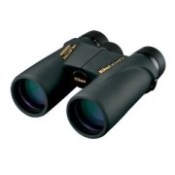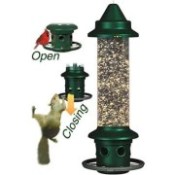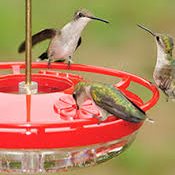
Coopers Hawk
(Accipiter cooperi)
 The Coopers Hawk (or
proper Cooper's Hawk) is North America's medium size Accipiter (about the same size as a crow). "Coops" breed throughout North America in forested areas. They also breed in riparian areas of deserts and other open areas, but must have trees to nest.
The Coopers Hawk (or
proper Cooper's Hawk) is North America's medium size Accipiter (about the same size as a crow). "Coops" breed throughout North America in forested areas. They also breed in riparian areas of deserts and other open areas, but must have trees to nest.
If you are trying to identify a hawk that may be a Cooper's Hawk or a Sharp-shinned Hawk, check out our Sharp-shinned Hawk vs. Cooper's Hawk page.
Male and Female Cooper's Hawk Measurements
As noted in the Accipiters page, Coopers Hawks (COHA) are reverse size dimorphic, meaning that the females are larger than the males.
Length:Males: 14-16 inches (37-41 cm)
Females: 16-19 inches (42-47 cm)
Wingspan:
Males: 28-30 inches (70-77 cm)
Females: 31-34 inches (79-87 cm)
Weight:
Males: 302-402 grams (10-14 oz)
Females: 479-678 grams (17-24 oz)
The measurment data above is from
A Photographic Guide to North American Raptors![]() . We highly
recommend this book for anyone interested in raptors.
. We highly
recommend this book for anyone interested in raptors.
Wheeler & Clark data are presumed to be primarily from eastern birds, Cape May, NJ migration monitoring.
We present data for wing chord and weight that we collected for both Eastern and Western Cooper's Hawks. We have found (as have others) that Eastern "Coops" are slightly larger on average than Western birds (see data below).
Eastern Cooper's Hawk Wing Chord*
Males: mean 234.6 mm (230-240)(n = 10)
Females: mean 263.5 mm (262-265)(n = 2)
Eastern Cooper's Hawk Weight (No Food in Crop)**
Males: mean 326.5 g (295-359)(n = 9)
Females: mean 505.0 g (491-519)(n = 2)
Western Cooper's Hawk Wing Chord*
Males: mean 225.0 mm (214-240)(n = 92)
Females: mean 255.6 mm (240-270)(n = 136)
Western Cooper's Hawk Weight (No Food in Crop)**
Males: mean 282.0 g (239-329)(n = 70)
Females: mean 427.5 g (326-556)(n = 114)
Western Cooper's Hawk Weight (Food in Crop)**
Males: mean 300.9 g (268-382)(n = 21)
Females: mean 442.1 g (319-517)(n = 21)
*Wing Chord is measured from from the wrist to the tip of the longest primary feather of one wing. The primary feathers have a natural camber (bend), and can be measured flattened or un-flattened. We always measure un-flattened wing chord.
**Raptors store food in a crop (pouch in the throat area). Food in the crop or stomach can effect the bird's weight. We can not know how much food is in the stomach, but we can estimate the amount of food in the crop. We score the crop on a scale of 0 to 3; 0 = no food in the crop, 1 = a third full, 2 = 2/3 thirds full and 3 = full crop. A full crop in a Cooper's hawk could weigh as much as 60-70 grams. Keep in mind, we are less likely to capture birds that are not hungry, so only a few birds have crops and very few birds have large crops.
Cooper's Hawk Diet
Cooper's Hawks prey mostly on small to medium sized birds and small mammals, but they also take other prey such as lizards, insects and frogs, but they occasionally try to take larger prey.
I have even pulled out a porcupine spine found stuck in a Cooper's Hawk! I don't know what the Coop was "thinking" or how big the porcupine was, but I doubt the porcupine attacked the Coop! It was probably just very hungry.
(Toland 1985), found the diet of Coopers Hawks in Missouri consisted of mostly of birds (87% of prey numerically and 65% by biomass) and mammals (34% biomass) and 1% was prey other than birds or mammals.
Cooper's Hawk Nest
Usually 18 - 28 inches in wide and 7-30 inches deep, with an inner cavity of 7 inches diameter and 2 - 4 inches deep. The nest is made of sticks and twigs. The nest cup is lined with chips or flakes of bark (from pine or oak) and sometimes fresh greenery.
The nest is usually placed on horizontal branches against the trunk of coniferous trees, or in the crotch of a deciduous tree 20-60 feet above the ground. About 50% of nests are 35-45 feet high.
I have seen a Cooper's Hawk Nest that was only 12 feet above the ground in a Gambel Oak (Quercus gambelii). The area was an open sage-brush area, that was high enough to have small patches of oaks.
Nest Construction usually begins in March or April.
Cooper's Hawk Eggs
Clutch size is usually between 3-6 eggs. About half of nests have 4 eggs and about 25% of the nests have 5 eggs.
Average size: 49 X 38.5 mm. (Bent, 1937)
Eggs are usually bluish or greenish white, then fade to dirty white. Eggs can be un-marked or have some brownish spots.
Egg laying usually begins in early May to early June. Eggs are usually laid 30-48 hours apart.
Cooper's Hawk Incubation Period
Incubation may not start until most of the eggs are laid and is usually about 24 days. If incubation began after all the eggs were laid, then all chicks would hatch in 24 or 25 days. If incubation begins with the 3rd egg of a 4 egg clutch, then incubation would last an additional 1-2 days. If incubation begins with the 3rd egg of a 5 egg clutch, then incubation would last an additional 3-5 days for a total of 27-30 days.
The chicks usually hatch a few days apart.
Cooper's Hawk Fledging
Chicks usually begin "branching" from the nest before they can fly at about 28-30 days, but make their first flight between 32-36 days after hatching. Fledging usually occurs between early July to early August.
Cooper's Hawk Longevity Record
20 Years and 4 months; based upon known age of a wild Cooper's Hawk at banding and subsequent band recovery (Data from Bird Banding Lab (Klimkiewicz 2008).
Cooper's Hawk Migration
Cooper's Hawks migrate from the Northern parts of the breeding range during late Autumn. There are many raptor migration sites where they can be viewed during Migration.
Related Bird of Prey Pages:
See Coopers Hawk Pictures, with molt and ageing information
Sharp-shinned Hawk vs. Cooper's Hawk
|
Our Favorite Bird Watching Binoculars, Squirrel-Proof Feeder & Hummingbird Feeder Read Our Reviews: |
||

Nikon Monarch M5
Best mid-priced bird watching binoculars. Waterproof, shockproof, multi-coated ED-Glass. |

|

Best Hummingbird Feeder
Drip-Free, Ant-moat, Durable, Easy to Fill and Clean. |
| Click Images or Links To View More Info | ||
